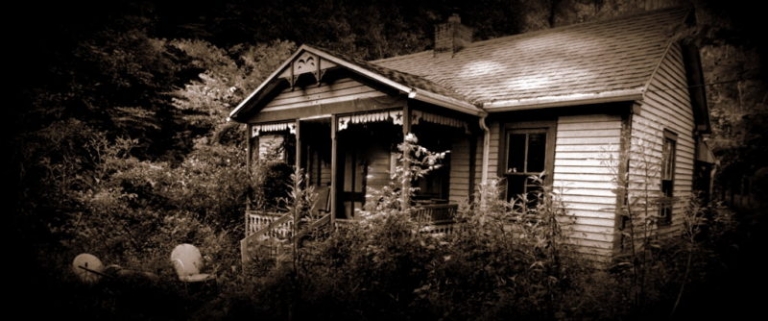
Few hills and hollers in West Virginia exist without a ghost around to haunt them. Mountaineers love their lore and find plenty of places for restless spirits to walk. Many such tales are based on real events, others on traditions handed down, and Susanna Connelly Holstein, of Jackson County, has collected as many as she's been able.
A founding member of the West Virginia Storytelling Guild and a former state liaison to the National Storytelling Network, she takes her fun seriously — researching the real-life drama behind many stories, visiting the sites about which she speaks, and considering the role such stories play in the broad panoply of life.
We asked her to rank her five favorite West Virginia ghost stories and provide some background behind each, which we've included in italicized notes. We were looking for insight into the story-telling process. She provided plenty of that—as well as chilling narratives bound to keep readers sleepless for hours.
The Greenbrier Ghost
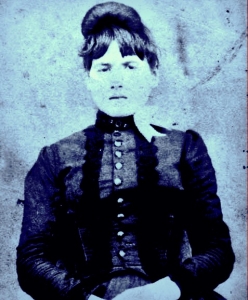
Elva Zona Heaster was a beautiful young woman when she met and married Edward “Trout” Shue, a blacksmith who moved to Greenbrier County in 1896 after the death of his second wife. Zona’s mother, Mary Heaster, warned her daughter that Shue had probably been responsible for the deaths of his first two wives, but Zona didn’t listen. She married him anyway, and, two months later, she was dead. On her death certificate, the doctor listed the cause of her death as natural, but Mrs. Heaster said, “That devil has killed her.”
After the funeral, Mrs. Heaster began telling people that Zona was appearing to her at night and told her that Trout had killed her by breaking her neck. Greenbrier County Prosecuting Attorney John A. Preston heard Heaster’s story and ordered an exhumation and autopsy, which revealed that Zona had, indeed, died of a broken neck.
Shue was arrested, though he boasted to anyone who would listen that no one could prove he did it and that he planned to have seven wives before he died.
At Shue’s trial, Preston did not ask Mrs. Heaster about seeing Zona, because he did not want the jury to think she was deranged, but Shue’s own defense attorney did ask about the visions. Mrs. Heaster was so convincing in her testimony that it took little time for the jury to convict Shue of murder and sentence him to life in the West Virginia Penitentiary at Moundsville.
"When I became a storyteller, the Greenbrier Ghost was one of the first stories I told. Later I would write a ballad based on the story, borrowing the tune from the ballad Barbara Ellen. What drew me to this tale is hard to pin down, but I think it is that this young woman wanted happiness, and, like so many other women, fell in love with the wrong man, despite warnings from others. There is something so sad in that. And I often thought about her mother and her strength and conviction in the face of ridicule that she had seen her daughter after the girl’s death.
"This year we visited Zona Shue’s grave. It is in a lonely little churchyard, a good way from any town. We tried to imagine the place as it must have been at the time of her burial. We could see what looked like the old road that ran below the cemetery, and the church’s location at a crossroads indicated that there were perhaps homes close by in those long-ago days. We placed pebbles on the stone to let Zona know that we’d been to see her."
Burnt House
Burnt House, in Ritchie County, was built around 1850 by a man named John Harris, who ran it with his son, William. Harris built the inn to accommodate travelers on the new and heavily traveled Staunton-Parkersburg Turnpike. In those days, medicine shows were a frequent source of entertainment, and they often stopped at the inn, drawing customers.
One of these shows brought a slave girl named Delsie. William Harris fell in love with her and begged his father to buy her, which John Harris did. The inn did even better after Delsie came, but soon a rumor began to spread: pack peddlers were coming into the inn, but not all of them were leaving.
The Harrises got wind of the rumor and fled, leaving Delsie behind. An investigation proved the truth of the stories, and the bodies of four pack peddlers were found stuffed into a cave in the hollow across from the inn, and that hollow came to be known as Dead Man’s Hollow. Delsie seemed to lose her mind after the Harrises left, and one day, apparently, set the inn on fire. She refused to leave the inn and burned to death.
Her ghost is said to roam the site to this day, sometimes manifesting as a blue flame that leaps from the ground.
"A close second to the Greenbrier Ghost is the story of how Burnt House got its name. I came upon this story, oddly enough, at a library as well. I was looking for information in a cabinet of newspaper clippings and other ephemera that contained all kinds of interesting information. There was a file called "Burnt House" that drew my attention, and inside the file were some clippings and a typed manuscript with no name to indicate who had written it. It was several pages long.
"The story of the slave woman who died so tragically in the fire that destroyed the Harris’ inn is so compelling. Is it just folklore? Did it actually happen? Sometimes it's hard to sort facts from fiction, and in this case, I haven’t really tried, preferring to pass the story down with what details I could learn. I researched pack peddlers as part of my work on this story because I came across so many tales of murdered pack peddlers, and that research has helped me with the telling of this story and several others.
Ikie’s Tomb
This story from Pleasants County isn’t actually a ghost story. There are no spirits or ghostly happenings. But it’s strange enough in its own way. It’s the story of Ikie Mooring, a little boy who was buried three times. Ikie died in 1906 from what people said was poisoning from ice milk. He was buried on the family farm, but his mother wanted something more for her son, so she had a large concrete tomb built on a high ridge, and Ikie was re-interred there. But, stranger than the exhumation and re-burial, is how his body was placed in the tomb. The tomb had a door with a window, and in the center was a concrete trough filled with formaldehyde, into which Ikie’s body was placed. If one looked in the window, Ikie could be seen floating in the formaldehyde in his little blue sailor’s suit.
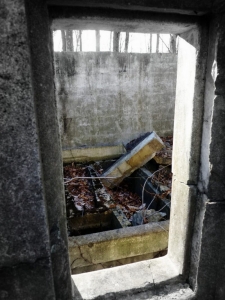
People said that Mrs. Mooring kept a rocking chair in the tomb and would sometimes pull the chair outside, pick up her little boy, and rock him. When she left the graveyard, she would have blue stains on her clothing. There were tales of other babies in the tomb, stored in large pickle crocks filled with formaldehyde. The Mooring family moved away, and the tomb was left untended. Vandals broke in, Ikie’s body was dragged outside, and there were stories of strange goings-on at the site of the tomb.
The local funeral director heard about the desecration and reported it to the state, which paid to have Ikie buried a third time — this time in a grave beside his grandfather. The roof of the ridge-top tomb was caved in to prevent anyone from conducting any kind of ritual there, but it still stands, surrounded by forest on a high lonesome hill overlooking the Ohio River.
"Another favorite story is not exactly a ghost story, per se, but is still odd enough to be told with ghost stories. It’s the story of Ikie Mooring, the little boy from Pleasants County who was buried three times. Again, research played a large role in the development of this story for telling. I delved into genealogy this time to learn who Ikie’s family were and studied details such as the preservation of bodies with formaldehyde."
The Headless Woman of Briar Creek
My husband, Larry, grew up in Olcott, a coal camp in southern Kanawha County. His granny lived at the head of a holler in a little cabin without electricity, and Larry loved to visit her. She would tell him story after story as she sat on her front porch, smoking her corncob pipe. His favorite story was that of the Headless Woman of Briar Creek. No one knew who she was or how she came to be there, but she was there every night, his granny claimed, on the big rock called the Hanging Rock that jutted out in a curve of the road. The headless woman wore a long brown dress with big black buttons and black boots, and she held her head in her hands.
Larry decided to test the truth of the story one night, and instead of running home before dark, as he usually did, he stayed until after dark and took his time walking down the road. “I saw that headless woman, all right, and I took off running,” Larry told me. She chased him all the way home, he said. The faster he ran, the better he could hear her old dry bones rattling behind him. It was only when he reached home that he discovered the rattling was no more than his marbles in the Prince Albert tobacco can in the back pocket of his overalls.
"My husband is a gold mine of stories, and his stories of childhood make my personal stories pale in comparison. His granny told him many old stories from the area while sitting on the porch of her cabin and smoking a pipe stuffed with Five Brothers tobacco. Strong stuff! and her stories made strong impressions on the imagination of a young boy, especially her story about the headless woman of Briar Creek.
"The story has deepened over the years as Larry recalls details and tells me about them. The pipe is one example of a memory that came back to him when we were talking about our tobacco-growing years and how strong that homegrown burley was."
The Unquiet Grave
Elaine Rowley never forgot the house in which she lived one winter when she was young. Her older sister had secured a job teaching at a rural school on the Ravenswood Pike, and, rather than have his daughter board with strangers, her father rented her a house near the school. The house felt cold and unwelcoming when the family moved in, but they shrugged off the uncomfortable feeling and settled in. Almost as soon as they moved in, Elaine began to feel listless. She grew pale and thin, and her mother worried about her. Everyone in the family heard odd sounds at night—whispering, dripping water, and running feet. The older sister met and married a young man and moved out of the rented house. Elaine was given the empty bedroom, but when she walked into the room, she could feel someone staring at her. She left quickly, closing the door behind her. No one else in the family would sleep in the room either.
Then one night the older sister and her husband came to stay overnight and slept in the empty room. In the middle of the night, the sister’s screams woke the entire family. She told them she’d seen a little girl standing at the foot of the bed, staring at her. She refused to sleep in the room, and she and her husband slept on the living room floor for the rest of the night. Some weeks later, a man stopped by and told them that years ago a family named Yost had lived in the house and had a little girl that they never let go outside. The girl died, and was buried under the large sycamore in the yard. When Elaine’s mother heard the story, she began packing, and the family moved out the next day. As soon as they moved away, Elaine’s health returned. Years later, Elaine went back to see the house, but it had been torn down. Only the sycamore tree remained. She wondered if the little girl was resting at last in her grave or if she was still wandering the Ravenswood Pike.
"Years before I became a storyteller, I was visiting our local library with my four young sons. Young boys are not always welcome in libraries, because they can be pretty noisy, but in the 1970s a lady named Elaine Rowley worked at the Ripley library, and she loved my boys. It was in October one year in the late '70s when Elaine and I were talking about ghost stories that she told me the story of something that happened to her when she was a young girl.
"The story stuck with me over the years, although it got pushed to the back of my mind. But, when I was asked to lead a ghost walk in Ripley, the story came back to me and is now one of the stories I tell during the walk. As with any good story, it was the little details that made the story really come alive for me—especially when she said that, although the family all noticed or heard strange things, they did not talk about it. In an odd twist, many years later, after Elaine’s death, one of my sons was married for a short time to her granddaughter."
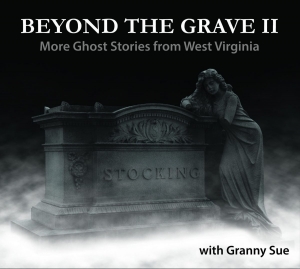
To find our more about Granny Sue's performance schedule, to arrange a performance, or to order her ghost stories on CD, visit her blog Granny Sue's News and Reviews.
Read Also
- Tale of Cale Betts ghost still haunts Calhoun County darkness
- Strange carvings greeted early West Virginia explorers




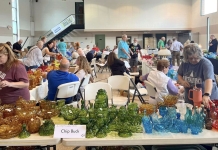






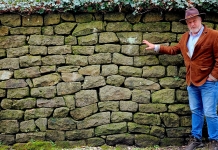
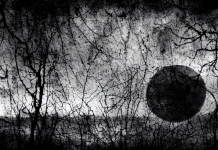

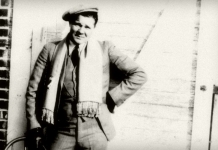
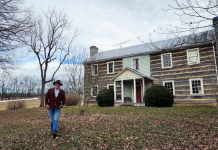
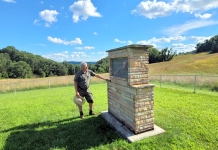








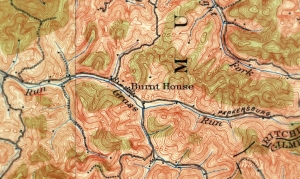




Facebook Comments